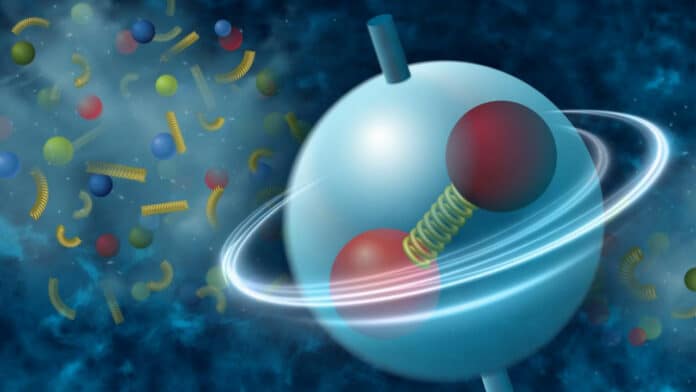Despite decades of advancement since Yukawa originally described the force between nucleons in terms of meson exchange, a comprehensive comprehension of the strong interaction still poses a significant barrier to contemporary research. One remaining difficulty arises from the non-perturbative nature of the strong force, which leads to quark confinement at distances on the order of the proton’s size.
In a new study, physicists from the STAR Collaboration have reported the first observation of a global spin alignment signal in heavy-ion collisions. The study offers a fresh perspective on the robust interaction operating at the sub-nucleon level.
As its name suggests, the strong force is the strongest of nature’s four fundamental forces. It holds together the atomic building components, quarks, and gluons, which comprise the protons and neutrons that make up atomic nuclei.
Heavy ions (like gold nuclei) collided at RHIC after being accelerated nearly as fast as light. Individual protons and neutrons’ boundaries were “melted” by the collisions, releasing the quarks and gluons typically trapped inside to form a quark-gluon plasma (QGP).
The colliding system creates a very high orbital angular momentum in collisions that are not exactly head-on (OAM). The preferential alignment of a particle’s spin along the OAM direction receives a portion of the OAM. The physicists assessed the spin alignment of these particles by observing the distribution of their decay products with respect to the direction perpendicular to the reaction plane of the colliding nuclei since the STAR detector was unable to measure the spin orientation directly.
This investigation measured the spin alignment of the K*0 and phi mesons. There are three possible orientations along the OAM for these particles. The likelihood of each of these three states should be equal to one-third if no special physics mechanism is present.
The scientists discovered that there was no preference for the K*0 mesons. The phi mesons, however, displayed a strong global spin alignment signal that grew with decreasing collision energy. It blatantly demonstrates that they favor one state over the other two. It is the first time an alignment of this nature has ever been seen in heavy-ion collisions.
Conventional explanations, such as the strength of the magnetic field, the vorticity, or the fragmentation of polarised quarks, cannot account for the startling spin-alignment pattern and magnitude for phi mesons.
Theorists recently proposed that local oscillations could cause the apparent preference for spin alignment of the phi mesons in the strong force within the quark-gluon plasma. Additional experimental confirmation is required for this theory, which is still debatable. If fully established, this connection will open up a potential new field of research into the behavior of powerful force fields.
Journal Reference:
- STAR Collaboration. Pattern of global spin alignment of ϕ and K*0 mesons in heavy-ion collisions. Nature (2023). DOI: 10.1038/s41586-022-05557-5
